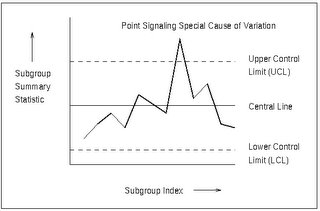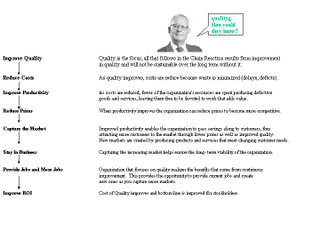I was sent (Valerie) this link for a new web site. The magazine provides expert advice from respected professionals about autism and offers solutions for families.
Check it out it is really good!
Updated 12/14/08
This weekend I attended a number of Holiday gatherings with friends and family I have not seen in some months. Three times at two different locations I was informed Justin was no longer mainstreamed and was now in the Center Program where he will remain until he graduates.
Of course I knew this and I think of him and the other boys everyday. Somehow I feel as if I have failed him. I hope the experts are right in their decision to remove him from mainstream. But my heart says the system has failed this boy because of dollars and lack of faith.
I vow there will still be more to this story...
Today (9/04/07) was the first day back at school. I was looking forward to seeing all the teachers, children and especially interested on how the ASD boys spent their summer vacations.
As I met Justin at the front door I was told to take him to the resource room and not his scheduled room posted for 4th grade. It was then I learned that Justin was going to be put into a Contained Room to work on his behavior problems and maybe later to be mainstreamed back in for some special classes. In the meetings that took place this week his young (uninformed) parents are surrounded by psychiatrists, psychologists, principals, social workers, etc telling them what is best. I am not allowed to attend or speak to the parents about special education issues.
Needless to say I was ready to explode. No one has spent more time with him at school than me over the past years. Last year he was not asked once to leave a room by a teacher because of his behavior. I have made it a point to learn and document his triggers so I can prevent most of his outbursts. Some days I know a particular class may not go over well so I get his work and we do it together in a more relaxed environment. This was the exception and not the rule.
You see some people (i.e., principal, social worker, director, no-nothings) would walk by and see us in the resource room or hallway and "assume" he was not in class because of a behavior problem (ie., not listening to teacher). Last year that was very seldom the case. Sometimes he would get sensory overload in the music class so I would take him out and we would do homework or study science or read a book and discuss it contents. Sometimes in Art they would be working with gooey or clammy clay and Justin will have nothing to do with it, another sensory problem. My decision was rather than color a ditto we would leave and find a quiet place and work on any subject that we were behind in or need extra study. His teachers knew what was going on because I kept them informed and they went out of their way to help in any way they could. I will always be grateful to DB, SP, EB, AL, AP and the Special Ed Aides. Justin and I both learned so much and they played a big role in his learning. It was not always smooth and sometimes it was very tough but we all learned together for the betterment of the children.
I am a better person for working with such a fine group of educators and people.
Not once did anyone ever ask why we might not be in the regular class. You see people will walk by (like they do in a store or restaurant) and "assume" the aide (parent) can't control the child.
Goals (especially behavior) are not provided for the ASD children, it is the aides responsibility to provide goals. This is wrong, wrong, wrong,(they learned this from the business world managers. Administrators (Managers) own the system, they provide the goals/targets and the aides provide the means and measurements on how to achieve the goals. They are then agreed upon by both parties.
Just like in the business world if you want me to set goals I will make them every time unless I'm an idiot.They mean nothing.
 Let me say this very clear and it does not only apply to Disabled individuals. Life and what a person brings to the table can not be determined/measured in a Snapshot (a series of one time observations or assumptions without asking or seeking further knowledge).
Let me say this very clear and it does not only apply to Disabled individuals. Life and what a person brings to the table can not be determined/measured in a Snapshot (a series of one time observations or assumptions without asking or seeking further knowledge).
Life and Learning is a Motion Picture (on-going) and you must take into account the end to end information and data to make good sound decisions for improvement. Otherwise you tamper with the child (system) and make things worse. If I have a bad day or a teacher gets so frustrated they may yell or scream to get attention. But that is a single occurrence and no one remembers all the good days.

I asked by what method was this decision determined? I was not asked, his 3rd grade teachers were not asked, his speech therapist was not asked. I’m not going to go into all that was said but it came down to Justin was to dependent on me and will listen to know one else. At least he listens to someone and we have been working on that issue too.
What is the goal/purpose of inclusion/mainstreaming?
I Googled & Yahooed this topic and found no real concrete answers. My goal this year for 4th grade was to get 80/20. That is 80% independent and 20 % Dependent in some areas. At the same time I was hoping maturity would also play a part in his on-going development and independence. The long-term strategy is to prepare him to be very independent as he enters Middle School (7th grade).
They say he can’t learn unless I am sitting there keeping him on task. They say he won’t listen to teachers but looks to me for guidance. What they don’t say is he completed all his work and homework last year. Granted some was late but he did keep up. ASD Children in many cases will not respond to shouting or demanding, they will react in the same manner and are not intimidated like general education students.
By what method was this decision made? No one has asked for my documentation for the past 2 years or used the Daily Behavior Logs that were kept for two years. No one asked his 3rd grade teachers who promoted him. It was decided by Professionals (except Speech Therapist and Regular General Education Teachers) in an IEP meeting who made decisions based on subjective observations without asking questions or understanding the reasoning as to why we were laying on the carpet taking a Spelling Test. Heck he averaged 80% for the year and he was never asked to leave the room.
Speaking of an Individual Education Plan (IEP) meeting without regular education teachers are was violation of
IDEA ACT 2006 Laws and Regulation (IDEA 2004, P.L.108-446). Sec. 300.321 - IEP TEAM states:
IEP Team must include the Parents; at least one of the child's regular education teachers (if the child is, or may be, participating in the regular education environment); ...
Sec. 300.324 - Development, Review and Revision of IEP says:
The answer they say is he could not do it unless I was sitting next to him. Hell if my parents had not been so strict about my studies I may have not learned much either. The point is HE is doing the work and I am not giving him the answers. He is capable but he has a disability that needs constant and consistent attention to function in a general education environment.
Perhaps I am wrong, my answer was (since know one else told me) to error on the side of the child. If I taught him manners and how to respect others and to tell me if he is upset rather than lash out then I’m wrong. If I gave him the self-worth that is drastically missing in his life then I am wrong. If I gave him right and wrong with the understanding this was for his own good then I am wrong. I am wrong if I spent my lunch hours for the last two years researching and trying new methods for Justin and the other boys to learn how to socialize on their own (read my other posts). Some days they would play kick ball or run around with their peers, other days they would wander off by themselves.
The biggest fear I have is that the Administrators who don't look pass their nose will think what they did was a success. Justin will be happy and will thrive in the contained room. He will become the ring leader because he is the oldest and the most functional. He will manipulate the teacher and aides to let him play as a means to be good. So what is my fear? THEY HAVE SECURED A PLACE IN A GROUP HOME FOR JUSTIN TO LIVE OUT HIS ADULT YEARS AND YOU CAN TELL THEM I SAID SO! They should be ashamed.
Without guidance as to what the goal is for mainstreaming, I will take a shot based on my experiences and knowledge (remember that each ASD child is as different as the stars in the sky.).
1) Understand and follow rules and regulations as determined by the government and by the school system.
2) Follow existing work plans and procedures and create the best possible learning environment for child, teacher and aide.
3) Develop a plan to provide the child with the necessary skills to interrelate in school and community.
4) Implement a plan of action to prepare the ASD student in the early grades (K-6) to be as independent as possible and how to react to situations at the junior high school and high school.
NOTE 1: It is false to think that most ASD children do not want to interrelate or socialize. The fact is they lack the social skills and this results in meltdowns, anxiety and frustration for the child. One way I have found to reduce this from happening is by using Visual (i.e., Calendar, Schedule, etc...) Learning.
NOTE 2: In order to teach social skills and to lead by example a continuous and separate form of teaching needs to take place in and out of the classroom (recess, gym, parties) by the aide(s).
I have also found that Rehearsing situations prior to them happening is an excellent way to prevent and prepare the student for what is coming. Sudden changes to schedules or even a substitute teacher can trigger a meltdown or disruptive behavior.
The argument is (and perhaps valid) what happens if I am not there? I am just an instructional aide, I am not a teacher (not certified) but have four degrees. My response is nothing might happen just like before you asked me to work with him because no one else could handle him. The awards, letters and praise mean nothing to me now.
In reality there are four of us who have worked together for a number of years and in an emergency or a period of time and could step in with little transition because all of the boys are comfortable with us. At the least it would by time to make the most effective changes possible that do not disrupt the learning's of the child or the disruption of his/her class.
I have posed the dependency question to a combination of five psychiatrists and therapists (including Justin's). They all said if I was not leaving soon (leave after 6 months or a year) that nothing is wrong because what the child needs is stability and structure in sometimes a very chaotic environment (school). They also said this might be the only opportunity he gets to depend on someone (me) and socialize with his general education peers who are overwhelming supportive of Justin.
Again my question is What is the goal/purpose of inclusion/mainstreaming?
Is it that an ASD child must be able to function alone in a classroom without any assistance? I would agree and say yes. However, what is the timeline? It will not happen overnight and if there is not a consistent effort over time it will never happen.
Is it any different than the multitude of children who are not graduating today because they never had anyone to show him or her the correct way? Unlike an ASD child who will act out most of the so-called silent minority of students who are not learning are pushed through the system as long as they sit there and behave.
If this is the way it is going to be then the powers that be best get the screening process fixed, because if you are going to mainstream/include ASD Children that are to dependent through their educational career it will not happen the majority of the time.
As for me I think some of the leaders were expecting an OK response from me. It did not happen nor will it ever happen. I’ve devoted most of my time and learning’s to Autism over the past three years and I will never have enough knowledge or wisdom as I would like but I will continue to Seek Profound Knowledge. I have asked to be reassigned to another school or perhaps it’s best to move on…
If any of you parents, administrators, aides, etc would like to comment I would appreciate the feedback. I am not proud enough to say all what I did was right or all wrong. It only matters what is best for Justin.
My Note: One of the ways I use to differentiate a person who is Autistic or Asperger's is by using three criteria; Behavior, Communication and Socialization. My involvement has shown me that Asperger students (Includes High Functioning Autistic) have Behavior and Socialization issues but are very capable of communicating (This does not mean it may OK). Autistic students have trouble with Behavior, Socialization and Communication (Some do not speak at all).
I would just like to know what is the goal/purpose for inclusion/mainstreaming?
If you care to leave a comment just click on comment at the end of this post. You do not have to sign up for a user ID, just click on anonymous and leave your comment no name needs to be added. If you would rather send me an Email please do so at:
http://www.qualityg.comcast.net/
Please, I really want to do what is best for Justin (and the other ASD Children), not to prove who is right or who is wrong.
I firmly believe now that Money (too many kids not enough aides) & Oil are the roots of all evil and are the causes as to why things get so messed up and continue to do so...
Thank You,
Greg
If you would like to read my other posts on ASD click on the Label – ASD at the bottom of this post and all of the other posts will come up for your reading.
9/5/07
I am leaving the elementary school and going to the high school. I will miss my co-workers (friends) dearly. I am a better person for knowing these (and teachers) people. This was not a forced move but hopefully the best move for the children, especially Justin.
More on this topic at http://qualityg.blogspot.com/2007/09/how-should-we-conduct-change-with.html
Perhaps this Poem says it all for me:
OUTDOOR PLAY FOR J and J
At noon we go to our lockers and get our Sponge Bob lunch box
He then checks our shoes and pulls up our socks.
Then it’s back to class and get called in to line
We shuffle to the back because he said that’s where we shine
He walks with us quietly and whispers all will be fine.
As we walk quietly in line headed to the lunchroom we go
We then search for a place at a table where a friend might show
The man who is with us sits across the room avoiding the flow
Often times we don’t eat and sometimes we act like kooks
Then the lunch ladies turn and wave to the man reading the book
He then stands where we can see; he gives us the “Look” and the room just shook.
After we eat we go to recess, sometimes it’s in, but we hope it’s out
It all depends if the flags are green hanging about
Yellow means stay inside then we groan and pout
Today we go outside and play on the equipment
We hope a friend will stop and play even if it’s a minute
But most of the time we play alone and it seems to be infinite
At 12:35 the whistle blows loud and sometimes we cover our ears
You see the decibel and noise level brings out some fears
Then the man with the bag who is always around, shows up and assures he is always near
After we line up we will try not to talk and to stay in line
Then our teacher meets us and says you all look fine
And the man who walks behind smiles and says we shine!























